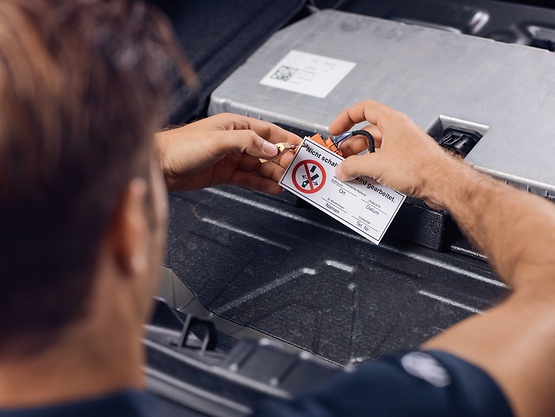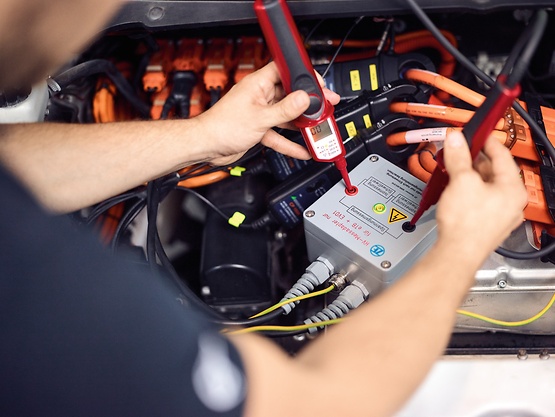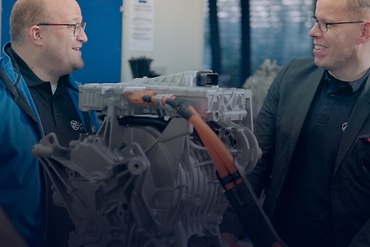
Contributed by Philipp Klöckener
July 07, 2021
4 minutes read
Good to know - the Safety rules at a glance
The Safety Rules
My colleague, Philipp no. 2, has already shown you the different high voltage qualification levels. Today I will show you something much cooler – an excerpt from the DGUV Info 200-006 and our high voltage trainings.
If you have already had a look at the document of the professional association, you might have stumbled over the five safety rules.
As Philipp has already mentioned, high voltage vehicles pose dangers due to the electric current. As work on live parts is not permitted in stages 1 and 2, it must be ensured that the vehicle is voltage-free before starting work. This is exactly what the five safety rules are for.
So, two notes first:
- You will (usually) never apply all five safety rules in the workshop
- Every employee who works on high voltage vehicles should be able to recite the five safety rules in their sleep. Before starting maintenance and repair work the necessary rules must be applied, because as Philipp already said: “Safety first!”
1. Isolate
2. Safeguard against reconnection
3. Verify the non-live state
4. Earth and short-circuit
5. Shroud or safeguard adjacent live partsunlimited
Rules 1 to 3 in a bit more in detail

Rule 1: Isolate
This refers to the deactivation of the HV system. First, it probably comes as no surprise that you have to… switch off the ignition. Depending on the car model, there are then different ways to shut down the system, e.g. by pulling the service disconnect plug or the battery main switch.
Just have a look at the manufacturer's instructions. If you cannot find what you are looking for here, take a look at the rescue map. You can find the vehicle rescue card on the websites of the vehicle manufacturers.

Rule 2: Safeguard against reconnection
To prevent unauthorized access, you must secure the system against being switched on again.
This step is very important, especially for the people who then work on the vehicle.
If someone reactivates the system while a person is working on it, it can go very wrong. We at ZF have a special sign for this, which we attach to all components that must not be switched on again.

Rule 3: Verify the non-live state
This step is essential before starting any work. In order to check the previous steps and be sure everything went well, you have to check that there is no tension. You can check that there is no voltage by using a two-pole voltage tester.
Find out more about working with high voltage vehicles:
Disover more about the high voltage training
In the different high voltage training courses, you will learn which steps you also have to follow and how to proceed exactly with rules 1-3. Please note that neither the DGUV Info 200-006 nor this contribution is sufficient to actually qualify you for working on high voltage vehicles. In high voltage training courses, you practice the different steps live (in other words, you are perfectly prepared for using them in the workshop).
It’s an exciting (and complex) subject. So, to work with confidence and know and comply with all legal regulations, register for the next high voltage training course now. As a small taster of the kind of training you will be doing with me (or Philipp no. 2), you can complete the online course for level 1 right here:
About the author

Philipp Klöckener
As Concept Manager, Philipp is responsible for ensuring Service Readiness in the field of Autonomous Transportation Systems (ATS) at ZF. His #zfexpert vision:
“The individual mobility of the future will change fundamentally and we will see concepts we haven't even thought of today.”


![[pro]Academy [pro]Academy](/media/master/service-images/zfa_pc_training_img_clutch-centering-tool-01_wxh_cmyk_2017-11_un-progressive_bs_32_xl_4.jpeg?v=1125971310)